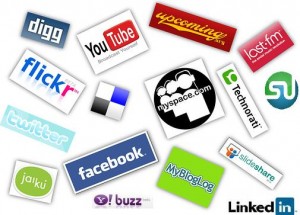
Image by Getty Images via @daylife
We are in a big hype of touchscreen. Touchscreen not only eliminates moving parts in electronics, but also opens up unlimited possibilities for more intuitive interface. With rising of touchscreen technology, therefore, many electronics manufacturers have begun implementing it in exhaustive lists of new products. Consumers like them too, as they convince you that you’re in charge of everything just on a fingertip. We now see them on computers, cell phones, cars, refrigerators and even microwaves (can’t believe it?).
There are three different touchscreen technologies used to register the motion of your fingertips: Resistive, capacitive and surface acoustic wave.
According to resistivetouchscreen.org, resistive touchscreen consists of two layers with small space in between. When a pressure is applied, the top layer touches the bottom layer, registering the combination of voltage and distance of the pressure point, and finds the X coordinate. And then, the same voltage gradient is used to find the Y coordinate.
Some of advantages of resistive touchscreen are:
An excerpt from HowStuffWorks.com says that capacitive touchscreen uses a layer with electrical charge on top of the glass panel of monitor. When the pressure is applied, some of its electricity is transferred to the epiderm of of skin. The decreased charge is detected by circuits located in each corner of the layer, and the amount of decrease is registered as the distance in each circuit, interpreted as coordinates.

Image via Wikipedia
Capacitive touchscreen generally transmits stronger signals than resistive touchscreen. Also, since it uses only one layer to detect pressures, it transmits 90 percent of light, providing better clarity of screen when compared to resistive touchscreen.
The surface acoustic wave technology (SAW) is one of the most advanced touchscreen technologies to the date. It consists of two transducers each registering X and Y axis on the panel, which registers electrical signals from ultrasonic wave spread on the reflector on the panel, interpreted by the controller of the transducers.
Because SAW does not overlay on the glass panel of monitor, it provides unaffected clarity of the screen. Also, it provides the strongest touchscreen sensitivity today.





 He always wanted be a sports writer. He started covering local sports and started enjoying it. He got his learning experiences in small newspapers, he actually didn’t learn as much when he got to the Washington Post.
He always wanted be a sports writer. He started covering local sports and started enjoying it. He got his learning experiences in small newspapers, he actually didn’t learn as much when he got to the Washington Post.






